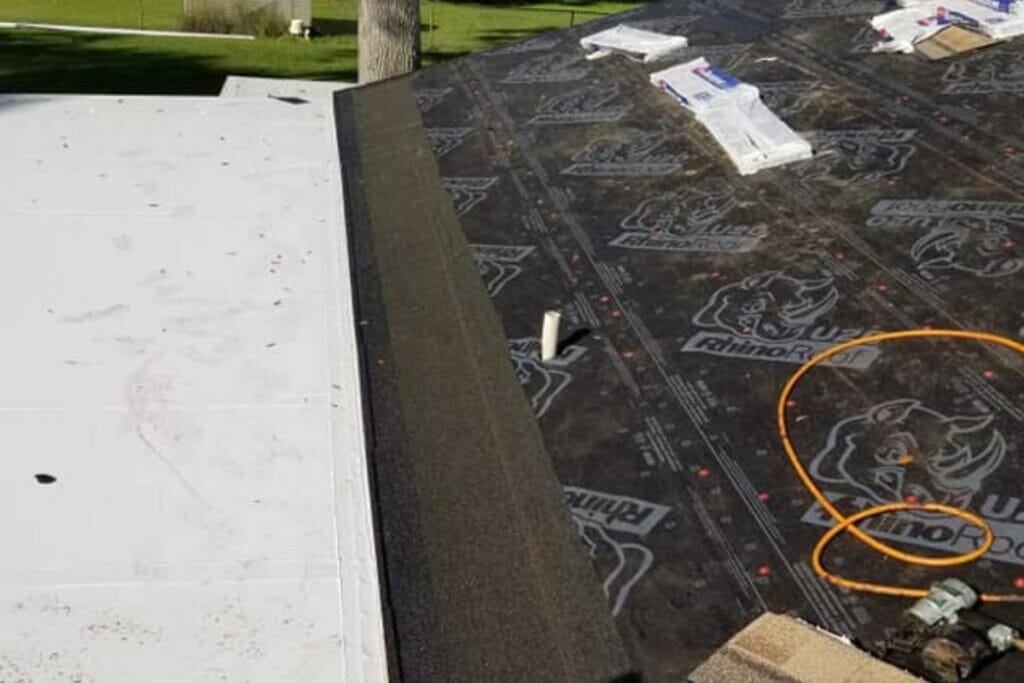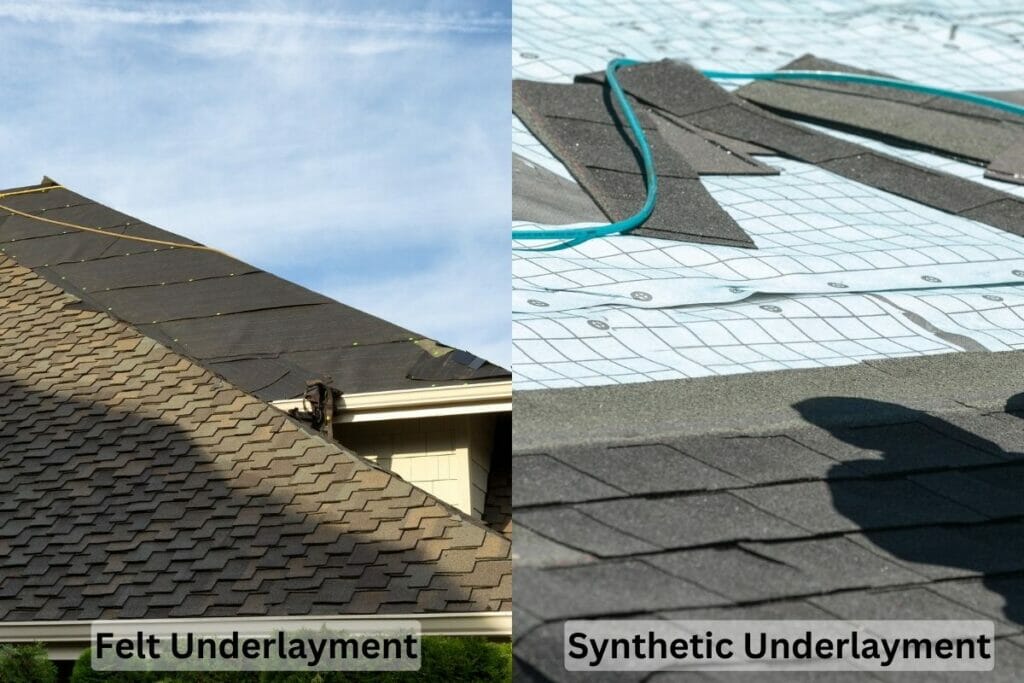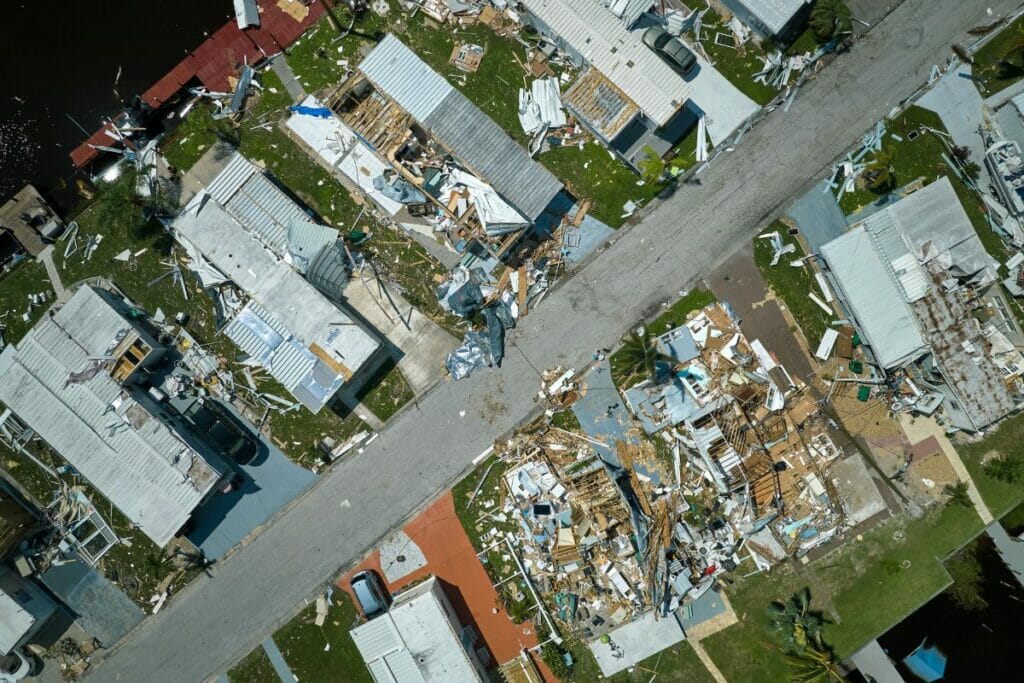We help our customers and community learn more about the roofing industry and make safer choices that abide by the code. This is a detailed guide prepared by our experts on the latest requirements for roofing underlayments in Florida.
An Overview Of Roofing Underlayment
A roofing underlayment is one of the most essential layers of a pitched roof. It’s a membrane made of water-resistant materials such as felt, rubber, and fiberglass. When Hurricane Michael hit the state of Florida, significant changes were made to the quality and installation standards for roofing underlayment. The state called for better protective measures as there were billions worth of damage inflicted on homes and buildings.
A watertight membrane is a huge part of this process. Also called an ice and water shield, roof underlayments are the primary parts of a roofing system that keep water from flooding into a house during a storm.
Now let’s learn all about the new underlayment requirements laid down in the updated Florida roofing code.
What’s New With Florida’s Roofing Underlayment Requirements?
The 2020 Florida Building Code, 7th Edition has updated the requirements for roofing underlayment for both commercial and residential properties with wooden roof decks. These updates are intended to improve resistance to wind and water damage during storms like a hurricane, wind-driven rain, or flood.
Here’s an easy explanation of the changes made to the Florida building code, and its new requirements:
#1 Stronger Felt Underlayment
The minimum strength requirement for felt underlayment has been increased to improve resistance to wind-driven rain and water damage. It must be #30 or conform to the new quality standards within ASTM D 226 Type II, ASTM D4869 Types III or IV.
But now, how many layers of roof underlayment do you need in Florida? According to the upgrades, you have the following options:
- Use two layers of felt or synthetic underlayment.
- Use one layer of felt or synthetic underlayment with a secondary self-adhesive or peel-and-stick layer for an additional barrier.
Moreover, you can qualify for a secondary water resistance discount on your insurance policy if you use a self-adhesive, double-layered watertight system. We’ve also explained this requirement in detail in a separate section about sealed roof decks.
#2 Improved Installation Techniques
The #30 underlayment is now also required to seal all the self-adhering tapes installed over the roof deck joints. In the case of renailing the roof deck, you must adhere to the requirements in R908.7.1, and it should be verifiable. During the redecking, you can leave the existing self-adhering tape on because it’s not easy to remove it completely. Over the existing self-adhered membrane, you will need to install a new #30 or equivalent underlayment.
#3 Changes To The Underlayment Table
The Underlayment Table R905.1.1 has been replaced with a new Underlayment Table R905.1.1.1 (Underlayment with Self-Adhering Strips Over Roof Decking Joints). The new table contains all the requirements for underlayment quality and installation, such as the underlayment types, number of layers required, lapping system, and fastening requirements.
These new requirements in Florida’s roofing code are consistent with the Insurance Institute for Business and Home Safety recommendations, which require Florida homes and buildings (with wooden roof decks) to have a sealed roof deck.
#4 Three New Options To Create A Sealed Roof Deck
The IIBHS did research and shared a video of a sealed roof deck demonstration in 2011. It clearly shows how a sealed roof deck can protect homes and buildings during a hurricane, which is not the case with an unsealed roof deck. This has now been incorporated into the code for Florida’s roofing underlayment requirements.
The changes specify three ways in which you can create a sealed roof deck for your home or building:
Choice 1: Single Layer Of Peel-and-Stick Underlayment

You can install a self-adhering rubberized asphalt underlayment complying with ASTM D1970 directly to the entire roof deck. Also called polymer-modified bitumen, the rubber-fortified asphalt provides a strong, durable layer of protection against water damage and helps create a sealed roof deck.
Choice 2: A Combination Of Screwed Underlayment And Adhesive Strips
You can install one layer of self-adhering rubberized asphalt on all the joints on the deck. It should be a strip that is 4 inches or wider, complying with ASTM D1970.
After that, you must cover the entire roof deck and the taped joints with a #30 or equivalent felt or synthetic underlayment. The product should pass the quality standards of Florida’s roofing underlayment requirements.
Choice 3: Two Layers Of Felt Or Synthetic Underlayment

If you don’t want to use a self-adhesive layer, you can install two layers of felt or synthetic underlayment to cover the entire deck. Since there’s a long-standing debate on synthetic vs. felt underlayment, the products must meet the quality standards and installation requirements of Floria residential roofing codes. These requirements are in accordance with the ASTM international standards, which are helpful for enhanced protection.
Apart from the underlayment requirements, there are many more changes to the Florida roofing codes. We hope our guide helped you understand the basics of roof underlayment requirements in Florida’s code.
As a property owner, you must ensure that your residents or employees, assets, and other belongings are safe, which you can ensure by following the new Florida building codes. Whether you need to repair an old roof or replace the shingles, Florida’s weather requires you to meet the highest installation and quality standards. This again proved correct when Hurricane Ian hit the state in 2022.

To have a safe and durable roof, that’s up to code, it’s essential to hire a roofing contractor who operates locally and has extensive experience in the industry. A free consultation is a great place to start your roofing project, especially in s storm-prone state like Florida.
We Can Help You Get The Safest Roof!
If you are a homeowner, it’s natural to be overwhelmed by the wave of new structural requirements, but it’s crucial to prepare for the next storm season! At SouthShore Roofing & Exteriors, we are here to help you build the safest roof for your home and building. Being a part of the community, we’ve been fortifying Florida homes and buildings against the weather for years! If you require a roof replacement or repair service that passes all the quality standards, you can rely on our experts, as hundreds of other property owners do.
Our team is equipped with the latest technology and knowledge on emergency roofing to restore your roof and exterior after it experiences storm damage. We understand how important it is to trust someone before letting them work on your property, and that’s why we work hard to exceed your expectations. We will help you understand what kind of roofing products are best for your home, and you can also plan your project ahead with our free estimates and guidance with insurance claims and financing options.
If you need our help with roof replacements or repairs in Florida, call us at (813) 400-3329. You can also use our instant roof quote service, which is helpful for anyone who wants to get a quick estimate on their roofing needs.




